I have glassed two boards in the last week or so as an experiment. Both 6-5 round tails pretty much the same shapes except one is my asymmetrical test board. The non-asym uses bamboo for an exoskeleton with no stringer. The asym is also stringerless and uses Xglass. I wanted to try some 6 oz Xglass I got from Graphite Master on the non-bamboo. I also got a small roll of 56 inch wide 2.3 oz glass plain weave from Thayercraft with the goal of draping it with the fibers aligned 45 degrees to simulate Xglass on the bamboo board. My thought was that I could get similar Xglass effect with a lighter cloth and better protect the rails from dings.
I was also interested to see how much I could reduce the amount of fill coat needed to get a smooth finish when I used the 2.3 oz on the outside. I have found that by putting the finer weave lighter cloth on the outside of a lamination, you can reduce by 1/3 or more the amount of resin used for the fill coat. And in place of the resin, which adds no strength to the lamination, you add more fiber, which does add strength. Mike Daniel is saying amen.
Well, pride goeth before the fall. I thought I had it all figured out. But I had a few problems. I thought it would be good to share a bit. Actually, over all, it turned out well. I am definitely liking where this is going, but I have a few kinks to work out. See what you think.
1. I am still convinced that a multi layer lam is the way to go. Three layers of 4 oz is better that one layer of 12 oz or two layers of 6. Just like G10. Inter-laminar bonding, and better glass to resin ratio.
2. Using smaller weave cloth on the outer lam to minimize fill coat and weight seems like a smart thing to do. Exchange the worthless weight of resin with some fiber and reduce the amount of resin needed to fill the weave. On the board with 2.3 oz on the outside, instead of using 7 oz of fill coat resin per side I used 3 oz. I used the squeegee to move it around and cover the board, then the brush to smooth it out and get the needed finish. I saved a half pound of weight (total both sides) and didn’t have to sand the excess off.
3. Thought I could shoot two birds with 2.3 oz rotated 45 degrees. The problem was that the light cloth moved around as I laminated and it was really hard to avoid bunching at the curves. As I tried to pull it tight, it just bunched up locally. It didn’t wrap the sharper curves on the round tail very well and left me with a lot of sanding on the wrapped laps. I found on the curves that you needed lots of relief cuts to get it to wrap well. This 2.3 oz plain weave was just hard to work with.
4. Get some X cloth, too bad it only comes in 6 oz, makes for a heavy lam, but it handles really well. On the asym I put it below a layer of 4 oz warp on one board and cut the 4 oz a littler longer at the lap (see pic) but save your off cuts for underfoot patches AND fin footballs under the glass. This stuff rail wraps well.
5. Use of 2.3 oz for X cloth, probably should be under the 4 oz. unless you are will to fight the cloth movement. Perhaps there is a better style of light cloth.
6. In spite of all the trouble I had during lamination with the 2.3 oz, I really did save a lot of resin on the fill coat. That 2.3 oz cloth almost didn’t need a fill coat. (see Pic). I would have normally used 7 oz of fill on a 4 oz cloth but instead used only 3 oz.
7. Weight diff: I saved 8 oz of resin on the fill coat and used about 8 sq ft times two of 2.3 oz cloth, so the weight saved was 8 oz resin minus about 4 oz of cloth. And the board ought to be stronger. Ought to be.
8. I used rail channels on both boards. Using the 2.3 oz made this a big pain. I couldn’t run my finger in the slot to push it down and pull out resin without bunching and moving. Using the 6 oz Xglass was no problem.
9. I will standardize on 4 oz. warp with Xglass. For lighter weight glassing in the WMD mode, I will use the 2.3 under the 4 oz warp, until I figure out how to better use it and make it stay put on the outside of the lam.
10. A lot of my findings are borderline anecdotal, but also have some solid experience and draw from proven lam’s and information I have gathered here and from the experts. I can’t be bothered with writing them all down. But I do welcome your thoughts and experiences. If I have it wrong I hope you will speak up.
(The asymmetric: one side about 1.5 inches wider, I used an 8 foot gun template for the toe side and a 6 foot round tail template for the heel side. the fins are offset fore and aft about 1 inch. the single concave is semi asym. I was afraid to get too weird. I dunno. could be a majic board, or a dog, if the former, I will give a full ride report. ha)
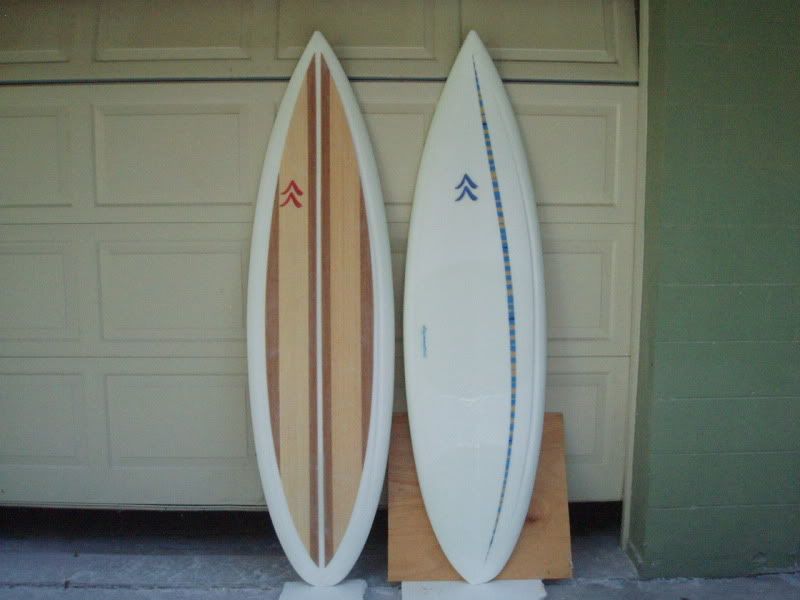
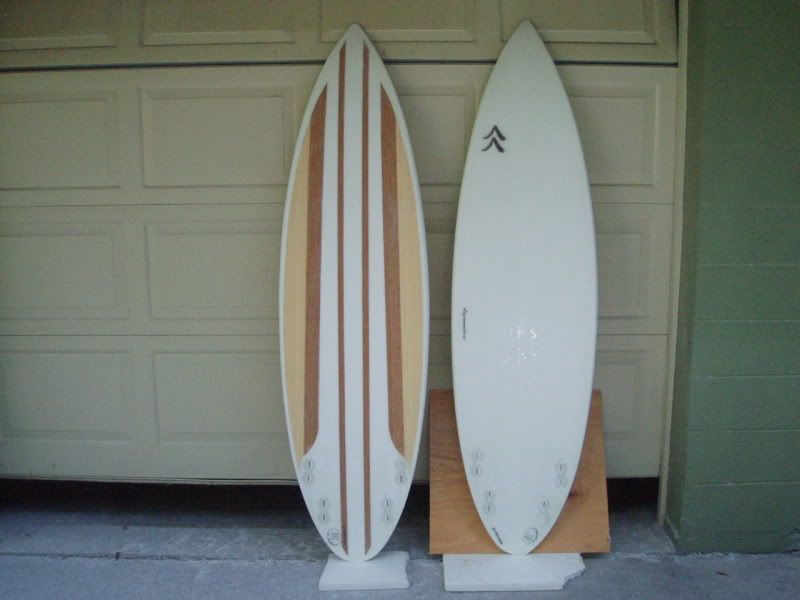
Here I am laminating the Xglass under the 4 oz warp. Notice the 4 oz warp is longer than the X out of fear that it would unravel. It didn't. I wrapped both the top and bottom lams around the rails. Sucker better not ding.
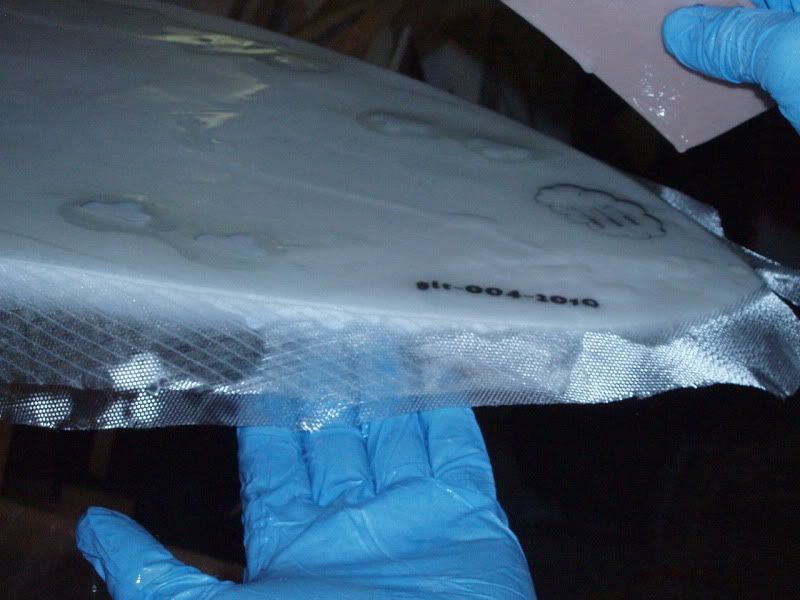
Here is the 4 oz/ Xglass lam before the fill coat. I used 7 oz of fill resin on the deck. Could have used 6 and been fine.

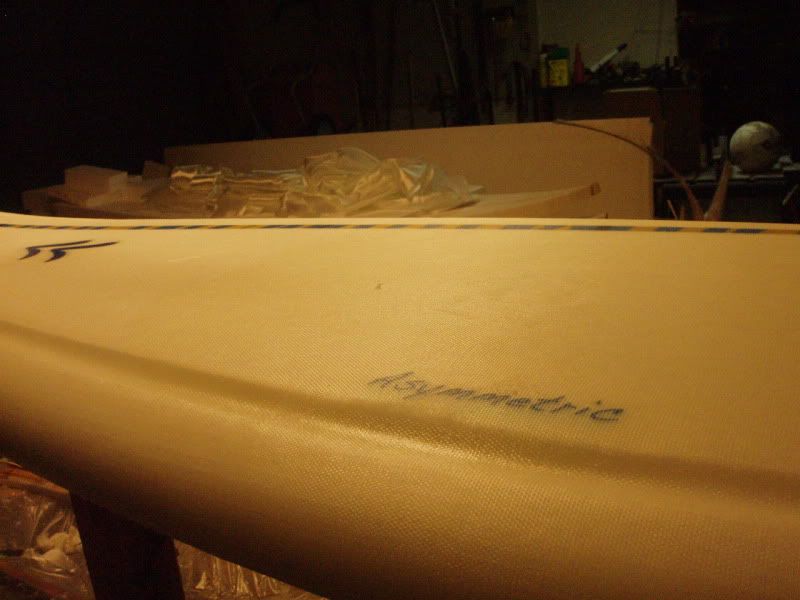
Here is the bamboo with 4 oz under and 2.3 oz over in the X position. Slick, eh? I really could have skipped the fill coat, but used 3 oz and could have gotten away with less using the squeegee to first move it around before brushing.
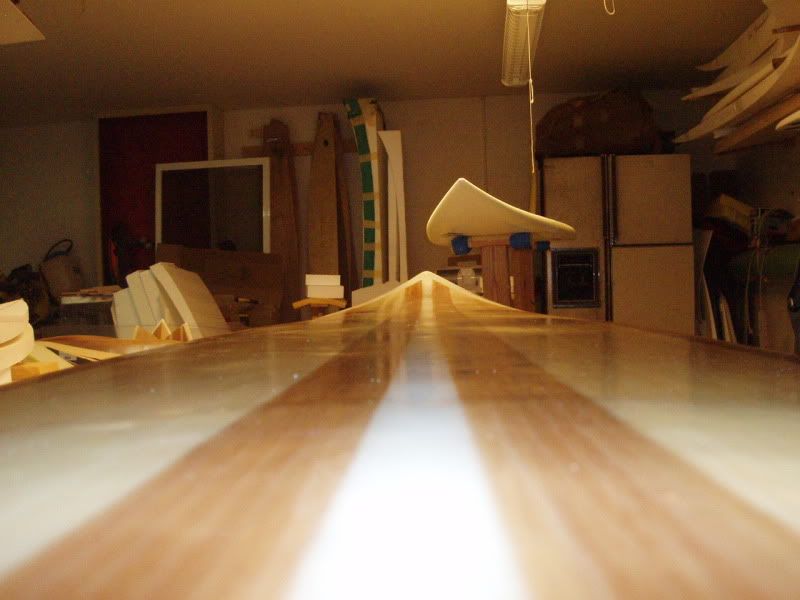
I used some X glass under foot for patches.
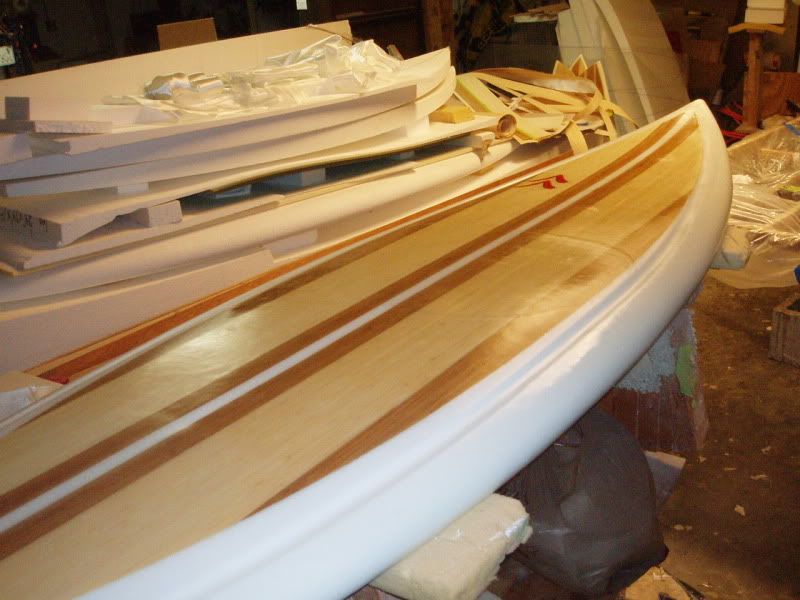
Here is the bottom of the bamboo. I've gone minimal to make Oneula happy. Next time I will just use some 6 inch wide arc's of bamboo on the deck and bottom rails. And some underfoot patches.
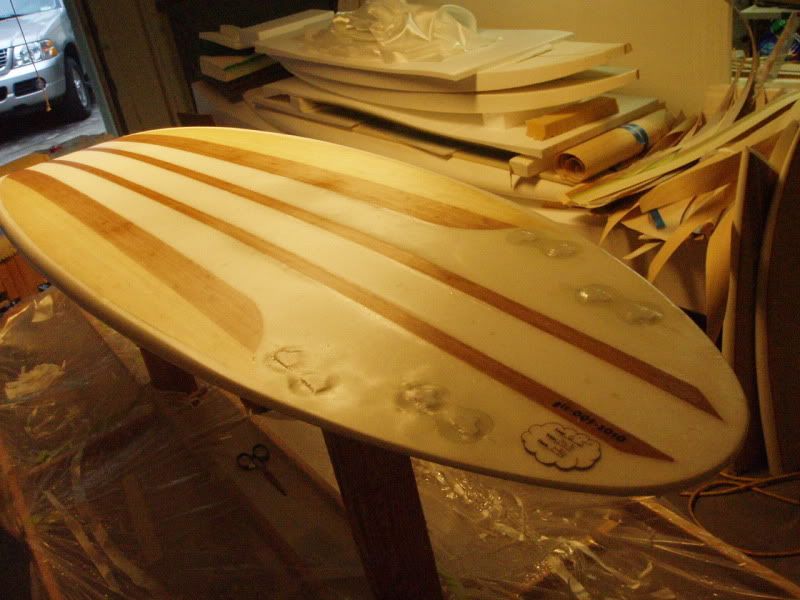
I really want to make the 2.3 X glass work. I know I can use it successfully under the 4 oz in an X pattern, and I know that if I can get it to work on the deck I can save over half a pound. Probably more. I think I need to build another couple of boards ad figure this out.
Just one more board. Then I'll quit. I know I have to quit. Tomorrow. Yeah. Tomorrow. Just one or two more.
(I have probably offended everyone in AA. Sorry.)